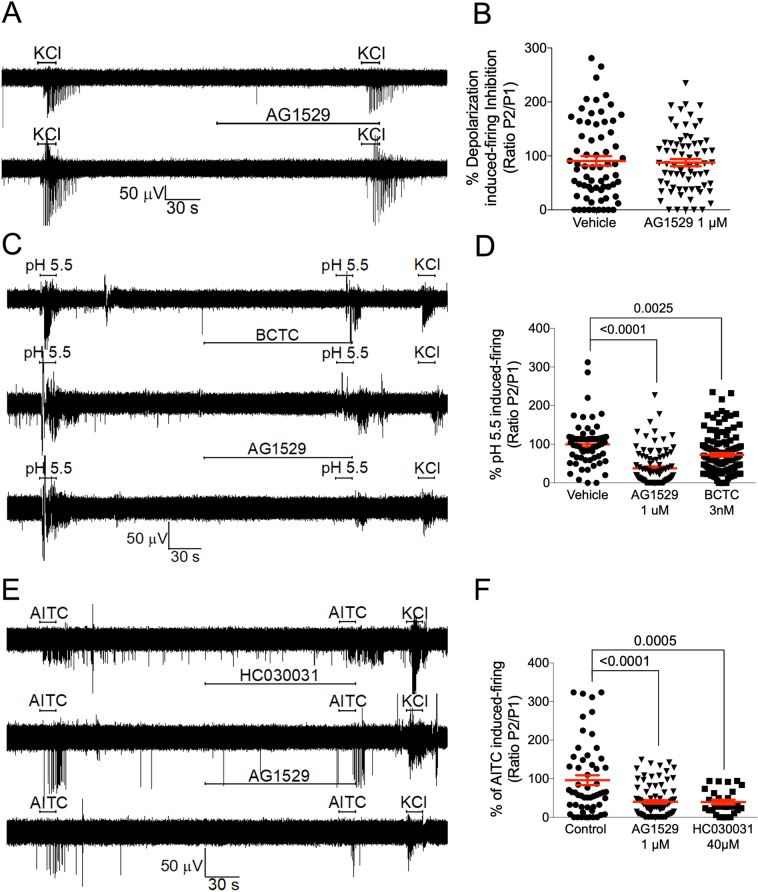Figure 7.
AG1529 effect on voltage, pH and AITC-evoked nociceptor excitability. (A) Representative MEA recordings of extracellular K+ (40 mM KCl)-induced nociceptor firing of APs in the absence and presence of 1 µM AG1529, applied 2 min before the second extracellular K+ pulse. (B) Normalized extracellular K+-induced neuronal firing of the second pulse in the absence and presence of AG1529. (C) Representative MEA recordings of acid pH (5.5)-induced nociceptor firing of APs in the absence and presence of 1 µM AG1529, applied 2 min before the second acidic stimulus. (D) Normalized pH-induced neuronal firing of the second pulse in the absence and presence of AG1529. Data were analysed using the One-Way Anova (F(2,275) = 28.15, p < 0.0001). (E) Representative MEA recordings of AITC (50 µM)-induced nociceptor firing of APs in the absence and presence of 1 µM AG1529, applied 2 min before the second AITC pulse. (F) Normalized AITC-induced neuronal firing of the second pulse in the absence and presence of 1 µM AG1529. Data were analysed using the One-Way Anova F(2,163) = 14.73, p < 0.0001 for panel (D) followed by the Bonferroni´s post hoc test, p-values for statistical difference are indicated. N (independent experiments) = 3, number of electrodes = 50–130 per condition.

